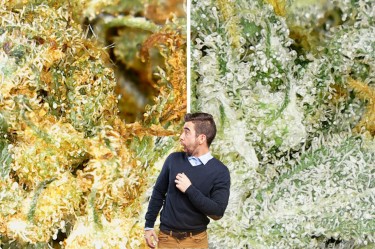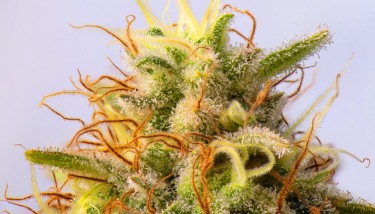
Trichome color changes tell you when to harvest your cannabis buds?
Using trichomes as an indicator of when to harvest
A better understanding of the timeline of trichome development is essential to growing quality cannabis for a balanced experience for users. Trichomes are the sticky outgrowths of resin glands present on the surface of stems, buds, leaves, and stalks of cannabis plants.
Trichomes function as part of a plant’s defense system, but they are valued for storing and producing aromatic terpenes and cannabinoids like cannabidiol and tetrahydrocannabinol. They also react strongly to the smell, taste and effects of cannabis.
At each trichome stage, the cannabis plant is said to contain different ratios of cannabinoids. Because of this, trichomes are considered one of the best ways to tell when the cannabis plant is ready to harvest.
How to examine trichomes
Every grower understands that growing cannabis in general is a delicate process. Therefore, trichome development needs to be monitored during the flowering period of the plant. By observing the opacity and color of the trichomes, growers can determine the best harvest time for the specific use of the cannabis plant.
However, many growers find it very difficult to tell when the trichome is clear or cloudy. Without a doubt, trichomes go through several stages that many first-time growers may not be able to identify. However, you will greatly benefit from referencing harvest charts and trichome color charts from experienced growers.
Of course, trichomes can be very small, measuring around 10 microns, and growing as large as 500 microns. Due to their small size, trichomes are often observed with 30x and 120x loupes. Under the microscope, trichomes look like hairs on the cannabis plant.
However, growers indicate that they are on the lookout for mushroom-like trichomes as they contain the majority of medicinal and psychoactive compounds. This type of examination helps growers to accurately identify the trichome stage and whether or not it is ready to harvest.
Types of cannabis trichomes
Three types of trichomes have been broadly identified as crucial to the chemical balance and maturity of cannabis plants. Having a clear baseline of these trichome types is very important for a successful harvest. These three types of trichomes are head-stalked trichomes, head-shaped trichomes, and bulbous trichomes.
Bulbous trichomes
Bulbous trichomes are tiny nodules that are evenly distributed on the surface of cannabis plants. They contain tiny THC and are typically between 10 and 30 microns in size. Bulbous trichomes often produce crystal-like disease and sheen, which many growers use to identify high-quality cannabis. These trichomes can be recognized by their single-celled stalks and cheerful heads that bulge with vegetable oil.
Capitate sessile trichomes
Capitate sessile trichomes are slightly larger and more common than bulbous trichomes. They measure between 25 and 100 microns and are typically visible even under their microscope. These trichomes can be recognized by their mushroom-shaped appearance and are often found on the underside of fan leaves and sugar leaves
Capitate sessile trichomes stimulate cannabinoids throughout the life cycle of cannabis plants. Not as much as headstalk trichomes though. It is believed that these trichomes are best suited to cannabis-infused beverages and edibles.
Capitate-stalked trichomes
Capitate-stalked trichomes are the most common and largest of the three trichome types. These trichomes also have a mushroom-like appearance with large bulbs at the top of the cane. These trichomes are visible to the naked eye and are often more common in female cannabis plants.
At around 500 microns in size, capitate trichomes become increasingly dense as the flowering phase progresses. This means that the development of this trichinosis is crucial as it produces more desirable terpenes and cannabinoids.
Stages of trichome development
The maturation and formation of trichomes is believed to affect the THC/CBD balance and potency of the cannabis plant. Four stages of trichome development have been identified and breeders can use this knowledge to create cannabis products for specific purposes – be it recreational or medicinal.
Each stage of trichome development has its own unique color and as such a trichome color chart is an important reference point for new growers. Depending on the stage of development, trichomes can be amber, milky, clear, or even mixed colors. Let’s take a look at each color.
Clear trichomes
The first sign of the transition to flowering is the development of clear trichomes on the plant surface. When magnified, the trichomes appear either opaque or clear. At this stage, the plant will start producing THC, but it’s still too early to harvest.
Harvesting buds with clear trichomes will result in a less potent and potentially unpleasant user experience. But a clear trichome on the cannabis plant is an indication of healthy growth.
Milky trichomes
The formation of cloudy trichomes indicates that cannabis plants are beginning to achieve ideal flavor and potency. However, the plant is not fully mature and lacks the rich aroma of cannabis plants. Cloudy or light trichomes indicate that the THC content of the plant is higher than the CBD content, which means a stronger psychoactive effect.
Harvesting cannabis plants at this stage gives users an uplifting experience. Of course, trichomes are milky for two weeks before developing further.
Amber trichomes
The development of amber trichomes indicates a shift in the THC/CBD ratio. A cannabis plant covered in amber trichomes has higher CBD levels than THC levels. This stage is identified by the absence of tiny white hairs on the bud.
Trichomes at this stage are brown or dark orange in color. Cannabis harvested at this stage gives users a sleep-inducing and more relaxing experience. The medicinal industry often gravitates toward cannabis plants harvested at this stage, as they help treat insomnia and relieve pain.
Mixed trichomes
Many cannabis growers typically look for a specific ratio of amber trichomes to cloudy trichomes. Many experienced cannabis growers believe that the best time to harvest cannabis is when the trichomes are 30% amber and 70% cloudy. Buds harvested with this amber to cloudy ratio are typically used in retail to induce cerebral and stimulating effects in recreational users.
Conclusion
Growing and harvesting stunning trichomes is an essential part of a profitable harvest. However, these trichomes need to be protected and handled with care during processing.
Given the delicate nature of trichomes, their preservation requires careful handling with a solvent-free and dry-sieving trichome extractor. The extractor can be operated either by adding powdered dry ice or as a standalone machine, depending on your budget or style.
As great as it is to harvest cannabis plants with impressive trichomes, it is also important to protect them during processing, otherwise all your efforts could be jeopardized.
TRICHOME COLORS AT HARVEST, READ MORE…

MAGIC FLOWER SPRAY FOR TRICHO COLORS AT HARVEST TIME?
OR..

WHAT ARE THESE ORANGE HAIRS ON THE CANNABIS PLANT?

Post a comment: